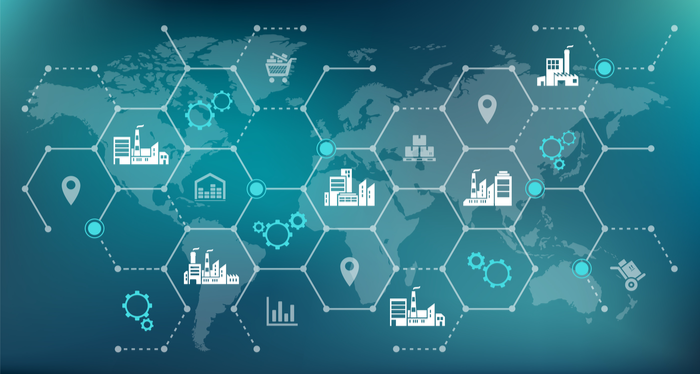
The risk of a two-tier system of digital and non-digital countries and ports
The recent decade of digital revolution has driven change in the port and maritime sector, requiring greater integration between devices, agents, and activities. To facilitate efficient movement, shipping lines, the port services, the cargo handling operations, the clearance agencies, and connective road, rail, and the inland water networks, all need to exchange data to move a consignment across and between jurisdictions.
Because maritime transport carries 90% of the global merchandise trade, any impediments in these logistical chains serving the maritime ports will have tangible repercussions for their host countries, their hinterlands and their respective constituent populations. In the short term, it can lead to shortages of essential goods and higher prices, as seen at the start of the Covid-19 pandemic. In the medium to longer term, it can cause higher trade costs, lower competitiveness, lower economic growth, and lower employment
Digitalisation is not solely a technological issue, but also as an institutional one, involving human capital
Digitising maritime ports and that complex logistical chain is thus vital to improving the competitiveness of port and country to facilitate economic growth. Numerous international bodies such as UNCTAD, WCO, WTO, and the IMO have all called for accelerating digitalisation of cross-border processes and documentation to protect business continuity, improve resilience, and reduce costs.
Despite these calls, the response has been slow to come by. The recommended first steps are outlined as mandatory requirements in the IMO’s Facilitation (FAL) Convention (IMO 1965) on the transmission, receipt, and response of information required between ships and ports via electronic data exchange. This has been mandatory for all ports since April 2019, though implementation remains partial at best.
Secondly, to develop an efficient digital ecosystem for a port, a fully functioning port community system (PCS) is required. This is a platform to optimise, manage, and automate port and logistics processes through a single submission of data in the transport and logistics chain. Despite its importance, as of November 2020, only 49 of the 174 member states of the IMO possess such systems —with higher income countries comprising the majority of those.
Equally, those ports with a Port Management System (PMS) – the next stage in the evolution of the digital ecosystem – is even smaller. A PMS enables the port authority to control all port traffic through a single digital interface, and manage port infrastructure such as port calls, dues, journal, incidents, waste, dangerous goods, planner, cargo, inspections, permits, services, security, and assets.
A PMS paves the way towards a truly automated ‘smart port.’ Namely, one that that uses emerging and disruptive technologies such as artificial intelligence, advanced analytics, internet of things (IoT), fifth-generation technology (5G), autonomous systems, digital twinning, and distributed ledger solutions as well as other smart technology-based methods to improve performance, economic competitiveness, and environmental sustainability.
This delay reduces the resilience of the maritime logistical chains and poses a risk to business continuity. Of greater concern is the risk of a two-tier system emerging between the digital and non-digital countries and ports.
The latter could be left behind and face the risks identified above; greater inefficiencies, higher transaction costs, hence higher trade costs, lower competitiveness, lower economic growth, and lower employment.
This would increase the economic distance between the developed and developing world and could also exacerbate the challenges that many low-income countries, or small island states already face.
This World Bank technical report ‘Accelerating Digitalization; Critical Actions to Strengthen the Resilience of the Maritime Supply Chain’ has been produced in close collaboration with the members of International Association of Ports and Harbors (IAPH).
Its aim is to stimulate a dialogue among key stakeholders and to move this essential agenda forward, specifically with short- and medium-term measures based on real case examples.
Digitalisation is not solely a technological issue, but also as an institutional one, involving human capital. The report makes that clear. It needs a high level of political commitment. To establish it, there must be an appropriate legal, regulatory, and policy framework on national level, across entire port community and supply chain and transport stakeholders. It also requires improvements in human capital to commission, absorb, and implement the associated demands on stakeholders.
Finally, growing digital integration is not without risk: Cybersecurity is now one of the major challenges facing the maritime industry. Between February and May 2020, cyberattacks increased 400% in the maritime industry. The industry has already suffered serious wake-up calls and more attacks will come. This report discusses both these risks, and how a port community should approach mitigating them, based on real case studies.
